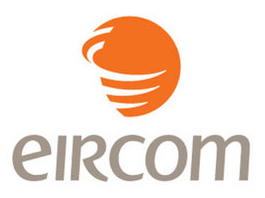
Syncplicity today announced the beta rollout of first-of-its-kind Group Sharing and Permissions features for business users. With the launch, Syncplicity is the first solutions provider to make it easy to share and sync folders across large groups of users within an organization, while allowing them to organize their files the way they want on their own computers and devices, and seamlessly collaborate from anywhere. By enabling group-based folder sharing directly from a user’s local file system on their computer or mobile device, users can more easily collaborate with dynamic cross-functional teams, freed from checking files into rigid organizationally-aligned file servers or dragging and dropping them into a new place to share and collaborate from. At the same time, the new features give businesses the security, transparency, compliance and manageability they require.
“Group collaboration can now occur without hassle, marking a seismic positive change for the industry,” said Leonard Chung, Syncplicity Co-Founder and Chief Product Strategist. “IT Administrators need a solution to the chaos and security headaches introduced by unmanaged and uncontrolled sharing through consumer-grade solutions. We’ve answered the call with innovative group capabilities that maintain the business-class administrative, mobile, and security features today’s organizations require, while enabling users to safely and automatically sync and share files and folders easily on a large scale.”
Syncplicity speeds access to shared files and eliminates information silos by ensuring everyone in a group has seamless online and offline access to files in shared folders without the burden of sharing them with each new group member. With the new Group Sharing functionality, Syncplicity users and Admins can easily share folders with pre-defined, centralized groups of users along with individuals. Every member of the group gains immediate access to all the files in the shared folders and organizes them however they prefer on their own computer. As new users join the group the shared folders are automatically synced to their computers. And, when users leave the group they automatically lose access to those folders and the files can be automatically wiped from their synced locations for additional security.
Syncplicity’s Group sharing also dramatically reduces the time and cost of supporting users and protecting company data. As new users are added to the system, IT Administrators can easily add them with groups, giving group members immediate access to all folders, including shared folders from corporate file servers. This reduces end-user file server connectivity and permission issues and reduces the support cost of VPNs. Because groups are centrally managed, users who are removed from a group lose access to shared folders and files associated with that group immediately.
Additional key features of the Syncplicity group sharing and permissions beta include:
Admins can create an unlimited number of groups and easily add users
Admins can avoid complexity and uncertainty by having constant
visibility into what folders have been shared with the group and what
users are members of each group
Admins can share folders from on-premise file servers so members of
the group get online, offline, and mobile access to those folders
without having to map drives or configure a VPN
Folders can be shared with “read only” or “read-write” access to
protect files from inappropriate changes; Syncplicity determines an
individual user’s access rights based on permissions granted through
group membership and individual shares (e.g. a user can be granted
read-write access individually even if they belong to a group that
just has read-only access)
As an added protection, Syncplicity prevents data loss by not allowing
any user to permanently delete files unless they are the original owner
Synced group folders can be accessed online and offline— if offline,
changes are synced to the group as soon as the user connects and
Syncplicity automatically handles version conflicts
Syncplicity customers interested in participating in the beta program can register at https://syncplicity.wufoo.com/forms/m7x1s1/ for additional details.








 26th April 2012
26th April 2012